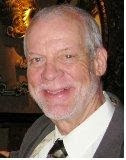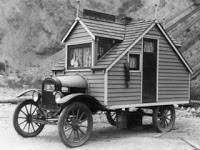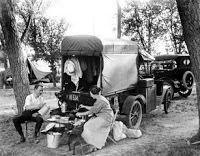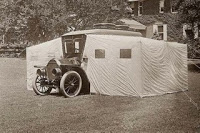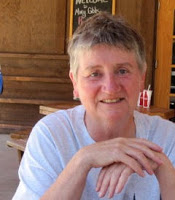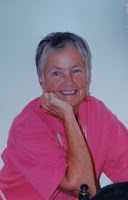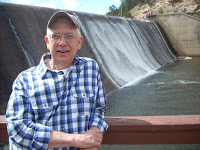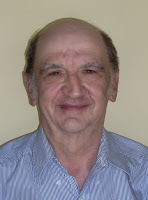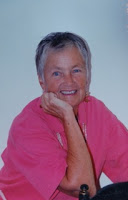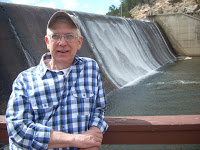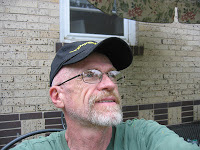I stand in front of the mirror,
taking a good hard look at myself and feel compelled to ponder on that which is
reflected back. I think I see a man in the prime of life, a successful
professor, a husband, a gay man, a painter of ideas, and a tiller of the earth.
In spite of the private shapes I forge, I grapple with those tenuous childhood
terrors that have haunted me throughout the decades as I submit to what I am in
the eyes of others. Of course, I recognize that what others see is not reality
and that the private me is just that, private, inked on paper indecipherable to
anyone but me. Unfortunately, all-too-often the world insists on categorizing
what is unfathomable to anyone but me. I am weary of appraisals that turn human
beings, ideas, me, into potential evil monsters. Most of my life I have lived
with the gun in the back of my head, recognizing, denying, fearing those moments
when I hear the click of the hammer, and today as so many other days of my
life, I await the silence.
A few weekends ago my husband Ron and
I drove up to Boulder, a day trip meant to celebrate having survived another
week of toiling to color within the lines. As we walked through the farmer’s
market an all-encompassing, gentile life swarmed around us like honey bees
intoxicated on the ethers of bright red poppies. We smiled at the precision of a
silver-painted street performer who mimicked life, appearing at one moment to
be a pewter statue, only to startle audiences as he awoke to movement, to life.
Around us gravitated goat cheese, gelato and herb vendors in a Turkish-like
bazaar. Bicyclists strolled lazily down the streets, while families gathered
around the banks of Boulder Creek, its rushing icy water inviting people to sit
on the grassy shores and by lulled by the cascading water’s sloshing toward the
sea. I told Ron it was like being transported back to a simpler, less hectic
time when people found pleasure under the spreading maples and kinder ways of
Pollyanna’s Harrington.
Our time travel scenario was abruptly
interrupted when we noted a crowd in front of city hall on the Pearl Street
Mall. A group of politically right-wing men and women were cordoned off by a
line of police officers like rats in a cage and separated from humanity. Having
crawled out from under their rocks and holding court, they used megaphones, and
bolstered by the freedom of speech and right to assemble, they delivered biting
tirades about building walls and closing our borders. Their intent was
obviously to incite the crowd. I thought it was ironic that while I had shed my
blood for my country and for our citizens to enjoy our Constitutional rights,
these pustules in need of laceration had draped themselves in the American flag
for which I had fought, claiming that they were true patriots defending the
homeland. The audience for the most part appeared bewildered that evil had come
to nest within their idyllic sanctuary. Many, however, found their voices and
fired back exchanges in an attempt to diffuse the vitriolic words crafted by
poisoned little minds. As I stood in front of the barricades, the speaker eyed
me with special interest. Of course, I could only surmise that since I was an
anomaly in the essentially white audience, I became an emblem of every
Trump-fabricated Mexican rapist and murder, best contained behind his
xenophobic wall. At the moment that he eye-balled and pointed at me, mouthing
something I could not understand, I felt a need to stand with the drag queens
of Stonewall and the lettuce pickers of California. When he pursed his lips and
blew me a kiss in derision, I instinctively turned to Ron and kissed him in an
effort to demonstrate that being gay and Latino was my badge of honor.
Nonetheless, although I had vindicated myself, I left feeling violated.
Being a man of color in America
requires courage to survive. Some people love to brand others by the outer
trappings of our personas. I so desperately long to be accepted as me; however,
I live in a society that often demands to know what I am, Hispanic, Latino,
Chicano, Mexican-American, homosexual, queer, faggot. Because I was raised
embracing the best of all worlds, loving the rich tapestry of diversity billowing
around us, I have always thwarted society’s attempts to cubbyhole me. It is not
easy. Though I am an American by birth and culture, so much of my life I’ve
been labeled as a dubious American, viewed by many in mainstream American society
as perhaps alien and exotic, perhaps inferior, definitely different; viewed by
just as many Mexicans with mistrust. Their eyes say, “Aunque tienes el apellido, y hablas nuestro
idioma, no eres más que un pocho; realmente no eres como nosotros.” “Although you have the Spanish
surname and speak our language, you are but an American who has lost his
culture; in truth you are not like us.” Thus, I slide back and forth between
the fringes of two worlds by smiling, my masking the discomfort of being
prejudged in a multi-layered world.
Of course, being a man of color in
America is also a wondrous adventure. Last week, I was in Kansas City at the
Nelson-Adkins Museum of Art with a friend I’ve known for decades. I surprised
my friend when I approached a museum docent and asked her in Spanish where to
find the bookstore, feigning to speak no English. I can only hope my friend forgives me for my
whimsical, wicked ways; however, I love demonstrating to the world around us
that although we are one people and one America, there are many rooms in the
house of humanity. We are a wondrous banquet of peoples from all walks of life
celebrating our individual as well as our collective journeys, but only when we
stop being afraid.
Intellectually, I have often
questioned whether evil truly exists, yet my soul’s instincts leave no doubt
but to its existence. Of course, I understand
the psychology that can goad a mind into a maelstrom of malignancy. I comprehend
Lucifer’s battle with sibling rivalry after having been the favorite only to be
compelled to kneel before man. I have even pondered whether he, Lucifer, aligns
himself with banished humanity rather than continuing to claim allegiance to a
capricious being, who surrounds itself with sycophants who feed their emotional
void. On the other hand, I suspect that Lucifer is the tool by which humanity
approaches Spirit, not as child-like innocents, but as full-fledge adults, well
aware that faith is possible only when we act on our free will. Yet, no amount
of intellectual rationalizing can justify humanity’s perpetual forays into the systematic
carnage and conflagrations that litter our history whether in Syria, South
Sudan, Washington, D.C., or Boulder. This being the case, I confess, that when I
am confronted by evil deeds and evil people, I have never been one to turn the
other cheek of forbearance. It may be spiritually preferable to change an enemy
by hating the sin while loving the sinner, but the reality is that sometimes
the enemy is transformed only when tension is applied. After all, evil
neighbors, tyrants, and bullies rarely pull back their claws until the blood
spilling upon the earth is their own. I believe that if people of conscience do
not stand up to evil doers and refuse to prostrate ourselves before their
blood-soaked sandals, humanity never ascends above our bestial, primordial
state. Although it may feel at times as though we are but one standing up
against a mighty force, I believe that opposition to evil does not require much
more than following the path that leads to ultimate manifestation of fair play
and open doors for all, as demonstrated by those rare evolved souls throughout
history who serve as bastions against the darkness.
© 22 Jun
2017
About the Author
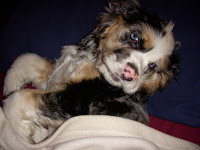
Cervantes
wrote, “I know who I am and who I may choose to be.” In spite of my constant quest to live up to
this proposition, I often falter. I am a
man who has been defined as sensitive, intuitive, and altruistic, but I have
also been defined as being too shy, too retrospective, too pragmatic. Something I know to be true. I am a survivor,
a contradictory balance of a realist and a dreamer, and on occasions, quite
charming. Nevertheless, I often ask
Spirit to keep His arms around my shoulder and His hand over my mouth. My heroes range from Henry David Thoreau to
Sheldon Cooper, and I always have time to watch Big Bang Theory or Under the
Tuscan Sun. I am a pragmatic romantic
and a consummate lover of ideas and words, nature and time. My beloved husband and our three rambunctious
cocker spaniels are the souls that populate my heart. I could spend the rest of
my life restoring our Victorian home, planting tomatoes, and lying under
coconut palms on tropical sands. I
believe in Spirit, and have zero tolerance for irresponsibility, victim’s
mentalities, political and religious orthodoxy, and intentional cruelty. I am always on the look-out for friends,
people who find that life just doesn’t get any better than breaking bread
together and finding humor in the world around us.
